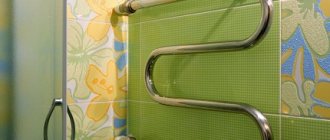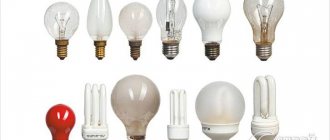Today you can install a kitchen sink that suits your taste. Moreover, it is not at all necessary to contact a qualified specialist for this - usually such a procedure as installing a sink in a countertop with your own hands can be completed. But in any case, the kitchen sink is truly strategic, and therefore its selection and especially its installation should be approached with all responsibility.
Installing a sink in a countertop with your own hands
Built-in sinks: pros and cons
A sink that is correctly matched to the style of the room and carefully installed in the countertop will look very attractive in the bathroom.
Sinks are made from various materials. They come in ceramic (porcelain and earthenware), metal, and acrylic. They are also made from natural or artificial stone, glass, or specially treated wood. The advantages of built-in options, compared to other types, include:
- practicality - such sinks can be installed on any surface, you can place the necessary washing accessories nearby, and use the space under the sink to store some things;
- reliability - this type of bathroom sinks are rigidly fixed to the surface of the countertop, stand securely and firmly;
- ease of installation - there is no need to mount the sink to the wall; even a person who does not have extensive experience in such work can handle installing a sink into a countertop;
Built-in sink
- aesthetic appeal - even inexpensive sink models, neatly built into the countertop, can look unusual and stylish. In addition, with the built-in version, all communications are hidden from view by the closed door of the cabinet;
- large selection of models - a variety of configurations and sizes of sinks allows you to choose the best option for your bathroom.
Some of the disadvantages of such sinks include the fact that in small bathrooms it is difficult to find enough space to accommodate the installation of suitable sanitary furniture for a sink.
Connecting communications
When the sink has been installed, you can begin connecting all communications - water supplies, mixer, sewer drain. The sequence of work is not important here - you can first connect the water supply hoses, and then the siphon. But more often, the sewer part is connected first, so that after connecting the hoses, you can immediately check the functionality of the system.
Screwing the water supply hoses to the pipes is quite simple, and then you need to install the mixer. In some cases, it can be immediately fixed to the sink, representing a single structure with it. If the mixer was purchased separately, then you first need to secure it to the sink by screwing it into a special hole.
Connecting a kitchen sink
Next, a siphon is installed. Its outlet is connected to the sink, a corrugated pipe is connected, which is then connected to the sewer pipe, to the drain. All connections must be sealed with rubber bands that come with the siphon.
On a note! If the diameters of the sewer and drain pipes from the siphon are different, then you should purchase and use a special sealing collar of a suitable diameter.
Before you start using the sink, you need to make sure that there are no leaks in the system. To do this, you need to open the water and see how the system works.
Types of built-in sinks
Depending on the type of combination of the sink and the countertop, sinks can be divided into two groups:
- invoices;
- mortise
Overlay-type options are inexpensive and easy to install. They are placed on top of the countertop, and only technological holes are cut in it to drain water. Even an inexperienced person in these matters can install such a sink independently. Installation of mortise sinks is more difficult. To install them, it is necessary to pre-cut an opening of exact dimensions in the countertop. There is also such a type of sink as undermount. They are not very popular, which is mainly due to their high cost. Installing them is quite difficult; it is better to involve professionals for such work.
Advice. In addition to the usual single sink, there are bathroom sinks with two sections. This option may be convenient for a large family.
General points
There are several modern technological approaches for installing a kitchen sink, which are selected depending on its form factor and connection features, the material of the bowl, the layout of the kitchen space, and the location of the furniture in it. Please note that:
- It is not recommended to place washing equipment near the hob and refrigerator. This unspoken rule of the “triangle” is associated both with energy (fire, water and cold are incompatible) and with optimal aesthetic perception;
- The sink should be located next to the work table, on which preliminary cutting and preparation of food is carried out for further cooking. Therefore, if the kitchen area allows, the hostess’s workplace is divided into 2 zones - for doing dirty work and a clean one, where ready-made dishes are finally served;
- When designing the placement of the washing bowl, take into account its connection to communication lines (water supply and sewerage). The simpler (smoother) and shorter the inlet/outlet lines are, the lower the consumption of pipes, fittings, loss of water pressure and the likelihood of drain blockages.
Built-in sinks: installation methods
Depending on the model of the mortise sink, it can be:
- recessed into the countertop - the sink is located below the level of the surface of the sanitary furniture. This sink looks elegant, but the installation process is quite labor-intensive. More often used to equip expensive sanitary furniture;
- installed flush with the countertop - installation of the sink requires care and precision measurements when cutting out the opening for the sink. Washbasins installed in this way look very aesthetically pleasing. They are practical and easy to clean;
Drop-in sinks
- placed elevated - the sink can be recessed into the countertop almost completely, half or only at the bottom - it depends on the model of the sink. They are the easiest to install. It happens that such options, even simple ones, look very interesting, but usually require more care.
Using wooden blocks
This installation option is usually used in cases where the craftsman for some reason does not have the appropriate mounting brackets at hand, when the fastening itself using standard mounting angles does not seem completely reliable to the homeowner, when standard fastening methods are not suitable or The underframe on which the sink is mounted has serious defects.
Scheme of types of mounting of a mortise sink
To use this method, you must stock up on wooden blocks of appropriate sizes in advance. In addition, it is necessary to select standard corners for furniture installation work. Only after this they begin to manufacture the upper frame for the underframe.
The frame thus obtained is inserted into the sink box. The entire structure is held together using 4 metal corners, with which the wooden slats are pressed against the washing container along its entire perimeter.
Only after this, the structure of the washing rack, prepared for the final phase of installation, is installed on the base cabinet. The whole simple operation is completed by screwing the second part of the metal corners to the walls on the inside of the cabinet.
How to install a sink into a countertop yourself
Most often, for bathrooms, a mortise version of built-in sinks is chosen, installing them flush with the countertop. The work of installing such a sink cannot be called too complicated, but it requires the craftsman to be slow and attentive when cutting out the opening. If a mistake is made, it is not always possible to correct it. In some cases, you can permanently damage the countertop.
To cut a hole for the sink, you can use the ready-made template that comes with the sink. If it is missing, you can make it yourself. You need to turn the shell upside down, attaching it to a sheet of paper or cardboard, and outline the outline. Then measure the distance from the edges of the sink to the fastening elements and, taking this into account, mark the second contour along which the opening will be cut.
Most often today, countertops made of plastic or wood, coated with special compounds to protect the material from moisture, are used in bathrooms. To cut a hole in them, you can use an electric jigsaw or hacksaw. But a cut made with a jigsaw turns out much neater and smoother. Artificial stone countertops are also in demand today. To work with this material, some craftsmen with extensive experience use a grinder with diamond discs, which is not the best option.
Attention! It is worth noting that in the hands of an inexperienced person, a stone product may simply crack when cutting an opening. Therefore, it is better to trust the installation of a sink in such countertops to professionals who have the appropriate tools suitable for working with a particular material.
Wash basin
All types of ceramics and polymer concrete are quite fragile, which, willy-nilly, has to be compensated for by the significant thickness of the bowl walls. The practical consequence is solid weight: when you turn the tap or mixer handle, the sink does not move and does not come off the edges of the cabinet. That is why the standard mount for the washbasin is often not included in the factory configuration.
However, the accidental application of significant force can still cause the washbasin to move and even fall with one edge into the cabinet. Fixation is not necessary, but desirable.
Sealant
The easiest way to prevent a sink from moving horizontally is to seal it with silicone sealant; It also seals the seam between the washbasin and the back wall.
A couple of tips regarding choosing a sealant:
- It is worth purchasing not a universal one, but a plumbing one. As a rule, this type of sealant contains antibacterial additives that prevent the development of fungus and the appearance of black spots on the seam.
- It is better not to buy the cheapest types of silicone sealants from little-known manufacturers. In our case, a high degree of adhesion to a smooth surface is important. It is adhesion that is primarily affected by price: cheap sealants adhere to difficult surfaces much worse than expensive ones.
High-quality sanitary sealant from Ceresit
Nageli
Most washbasins are equipped with mounting grooves designed for fixing to brackets. As a rule, these grooves fit exactly at the ends of the side walls of the cabinet. In order to prevent horizontal movement of the sink, it is enough to provide the cabinet with several protrusions in the appropriate places.
How can I do that?
- Wooden dowels are seated with glue in pre-marked and drilled holes. A nuance: it is better to make dowels of variable diameter, thinner at the bottom and thicker at the top. The instructions are due to the fact that the thickness of the laminated chipboard in the walls of a standard cabinet is only 16 millimeters, and a thick dowel with significant lateral force can easily be torn out along with the meat.
- Improvised dowels can be made by screwing screws into the ends of the walls (with pre-drilling, of course). Previously, two plumbing gaskets for screw mixer taps are put on each of them; If it is necessary to reduce the outer diameter, the rubber is trimmed with a sharp knife.
For such fastening, the grooves in the washbasin must be at the ends of the walls
Installation process for a built-in sink
When installing a sink into a countertop, it is better not to rush and act carefully, because some mistakes will simply be impossible to correct in the future. Work on installing the sink is carried out in stages:
Installation of a built-in sink
- Decide on the location of the sink on the countertop, attach the prepared template for the opening and outline the outline. It is better if the hole for the sink is not too close to the edges of the countertop, otherwise the thin fragment of the structure may break under load.
- Using a jigsaw, make a hole in the part of the tabletop fragment that will be cut out. From this hole, carefully make a cut along the marked contour of the opening.
- Clean the cut area on the countertop with sandpaper, then cover it with silicone sealant.
- Install a siphon, mixer, connect pipes for supplying and discharging water.
- Install sealing tape along the entire edge of the opening or apply a layer of silicone sealant in these places, or combine both. After bending the fasteners, carefully insert the sink into the opening of the countertop.
- Adjust the position of the washbasin, tighten the fasteners, and remove excess silicone.
You can install a built-in sink yourself. But you need to act carefully so that everything turns out beautifully, because negligence in performing the work will certainly affect the overall appearance of the bathroom.
Sink selection
It is also important to choose a sink based on depth and volume. The optimal sink is one that has a sufficiently large depth, but at the same time the mixer is of moderate height. Otherwise, the scattering of water splashes when washing dishes will be strong, and the set will somehow suffer from constant wetting.
How to choose a kitchen sink
You should decide in advance on the material from which the sink is made. It is best to take a stainless steel sink - it is both easier to install and easier to connect. The enamel version is also suitable. The most difficult thing to work with will be ceramics – they can be easily damaged. And the weight of a ceramic sink is large; if it falls, it can not only damage the set, but also injure a person (there is no guarantee that a beginner will be able to fix such a sink well right away). And, as a rule, such sinks are not very deep.
Which sink is right for your kitchen?
Advice! You should not experiment if you have no experience installing sinks before. It is best to take the most simple and inexpensive option that is easy to install.
Countertop and sink
As for the mortise-type sinks, which are discussed in this article, it is worth noting their advantages:
- hygiene and ease of cleaning;
- the ability to have a sufficiently large working area;
- good appearance due to the low side (about 5 mm);
- a large selection of sinks and faucets for their installation.
Types of kitchen sinks by shape
Of course, installing such a sink is not entirely easy, but proper installation will ensure a good connection between the sink and the countertop and prevent dampness from appearing in the area between the walls and cabinets.
Prices for kitchen sinks
Kitchen sink
Sink built into the countertop: photo
Application of glue
The only real difficulty with this option is that the dimensions of the underframe itself and the sink installed on it must practically coincide. Meanwhile, the special cabinet (underframe) should be only a few mm narrower than the width of the sink.
Thanks to this, the overhead sink can be easily installed between the side walls of the base. In this case, it is necessary to ensure that the sides of the washing device comfortably cover the upper ends of the cabinet.
This method assumes that before “planting” the sink, the ribs of the underframe are covered with a continuous layer of silicone glue or other high-quality sealant. The sink must be pressed against the ends soaked in the adhesive and left for 2-3 hours until the adhesive has completely dried. Subsequently, it will not only firmly hold the container in a fixed position, but also protect the underframe from water penetrating into it.
Installation rules
So, let's move on to the main question of the article - how to install an overhead sink? The whole process is divided into two main stages:
- Assembling a floor cabinet for kitchen furniture.
- Installation of an overhead sink.
The cabinet itself is a piece of cabinet furniture, so it is sold unassembled. This means you will have to assemble it yourself. In principle, there is nothing complicated about this, because the cabinet has only a few assembly elements:
- two side walls;
- bottom;
- two doors;
- three frames, with the help of which the necessary strength of the entire structure is created;
- accessories;
- fasteners.
For assembly you only need one tool - a screwdriver.
First, two frames are attached to the side walls with self-tapping screws and metal corners: one on top, the other on bottom. That is, a kind of frame is created. The bottom of the cabinet must be placed on the lower frame and secured in the same way as the side walls. Now the rear frame is installed. It is attached to the sidewalls with corners and self-tapping screws installed in the middle.
Attention! The doors of the base cabinet can only be installed after the installation of the overhead sink has been completed.











